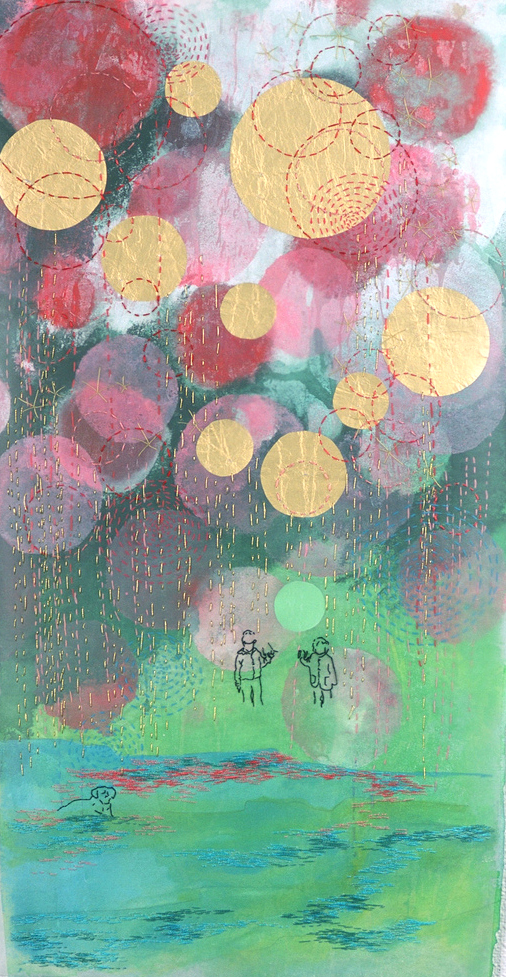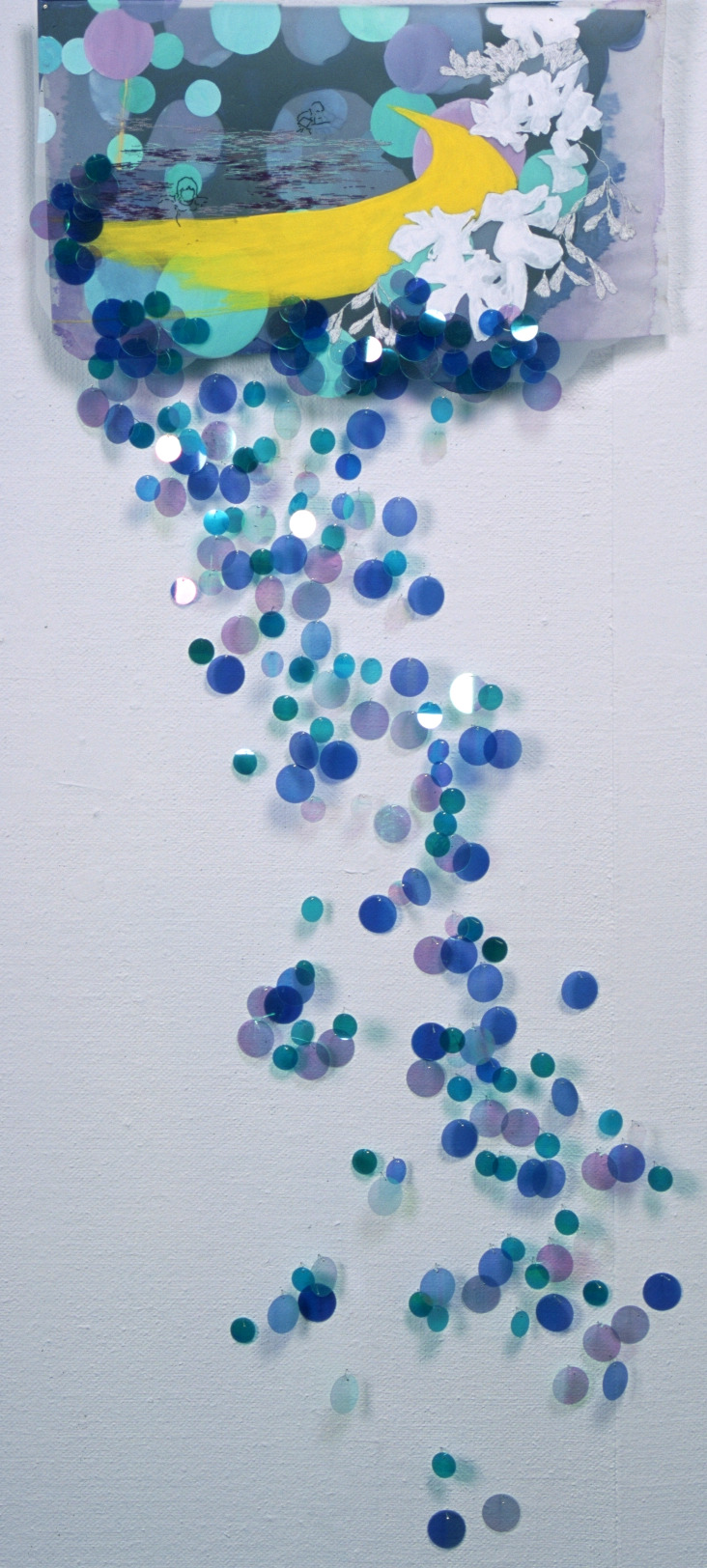a space for memory, MFA Thesis Show, 2007
My work addresses issues of memory, especially paradoxes of remembering/ forgetting, fact/fiction, and invention/recollection. My work is based in memory and confronts specific personal memories; my works also serve as locations to incite memories (my own or the viewer’s). Inspired by personal and found photographs with their inherent quality of “memory,” I begin the task of creating/reliving a memory. The photographs serve as impetuses toward memory or invention, as I may recall a specific instance, or be driven to create a new memory based on a combination of photographs. Furthermore, to remove certain figures and objects from the photograph by tracing, not only depletes the photograph of its authority, but also creates an echo of reality. This “echo-tracing” is not only detached from its original location and time, but its matter-of-fact creation disregards the “skill” in drawing in order to maintain the anonymity and the immediacy of capturing the memory.
Whereas tracing photographs, painting and drawing suggest the necessity to remember things immediately, the hand embroidery demands that such memories become solidified through the slow, solitary process of stitching. While embroidering, I am able to reflect upon the memory—to let it engrain in me through the experience—as well as create/recall new memories in my mind. Such stitching is not meant as a mere stimulation towards memory, but also serves as my attempt to reclaim lost “feminine” and family traditions, as well as to embed myself in an active dialogue between “women’s work” and a clearly “masculine” way of working. Thus, my drawings address issues of traditional female education and traditions passed from mother to daughter, but they confront such concepts in a hybridized form.
My body of work thus addresses the space of personal memory where fact and fantastical myth merge, and where memories may emerge within both the intimate and immense nature of the drawings. Psychologist and theologian, Thomas Moore describes personal myth in his book, Rituals of the Imagination: “A mythic autobiography would tell of the inner geography, the animals, the gods, and the unnatural events that come to the surface as a life. We get at this myth, not by telling the story of a life, but by telling its stories, over and over again, with all their many versions and contradictions” (26.) Indeed, I seek to tell the stories of my memories not as a means to expose my life’s story, but as a way to share the various memories, the fantastic elements and the contradictions that are present in everyone’s memories of childhood.
Click images for full size.













